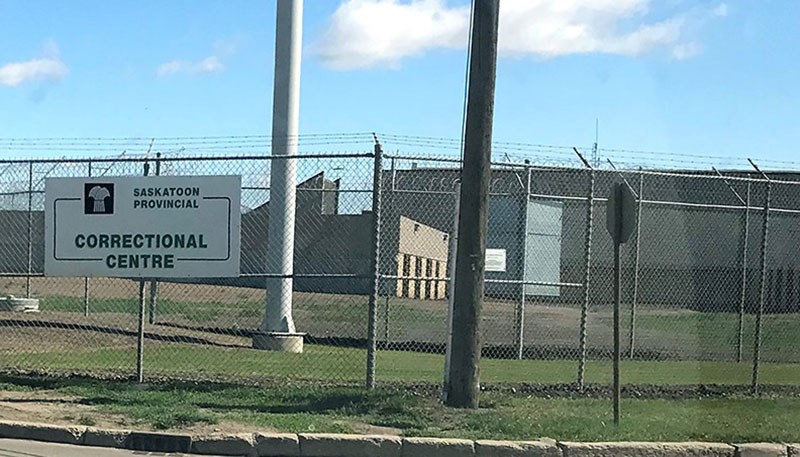SASKATOON - Indigenous groups and prisoner rights advocates joined forces to call on the Saskatchewan government to cancel its $120 million planned expansion of the Saskatoon Correctional Centre saying the money is better spent on community supports.
The facility will overwhelmingly house Indigenous people who haven’t been convicted of a crime, said the Congress of Aboriginal Peoples (CAP), which teamed up with the Association of Metis, Non-and Status Indians of Saskatchewan (AMNSIS), the John Howard Society of Saskatchewan, Community Legal Assistance Services For Saskatoon Inner City (CLASSIC), Pro Bono Law Saskatchewan, and the Elizabeth Fry Society of Saskatchewan.
“Three-quarters of inmates in Saskatchewan are Indigenous, because of racism and discrimination,” said Kim Beaudin, CAP national vice-chief.
“The government’s solution is to spend hundreds of millions warehousing even more of us,” he added. “This center, Premier Moe’s ‘jail of dreams,’ will lock up people who haven’t even been convicted of crimes, despite COVID proving that being jailed puts their health and lives at risk and fails to even support the administration of justice.”
Jail expansion contradicts Truth and Reconciliation
The province’s expansion of the Saskatoon jail contradicts the 2015 Calls to Action in the Truth and Reconciliation Commission of Canada, which was endorsed by the federal government in 2012, said Charlene Lavallee, president of AMNSIS.
“Many of those Calls to Action have not been addressed by this current government of Saskatchewan,” said Lavallee.
The Calls to Action are aimed at addressing the legacy of residential schools and advancing the process of reconciliation in the country. They include eliminating the over-representation of Aboriginal people and Aboriginal youth in custody, provide funding for alternatives to jail, respond to the underlying causes of offending, make reforms in the criminal justice system to address needs of offenders with Fetal Alcohol Spectrum Disorder (FASD), and implement Aboriginal justice systems consistent with the Treaty and Aboriginal rights of Aboriginal peoples, the Constitution Act 1982, and the United Nations Declaration on the Rights of Indigenous Peoples.
Highest staffed correctional system in world
A report released last year by Dr. Ivan Zinger, Canada’s prison watchdog, said Canada’s correctional system is one of the highest staffed correctional systems in the world.
The province estimates the expansion will create more than 130 additional full-time positions at the Saskatoon Correctional Centre, and about 600 temporary full-time jobs over the course of construction.
Beaudin said the money spent on expanding the remand centre should go towards treatment programs.
Saskatchewan holds people on remand at twice the rate of other provinces, said Pierre Hawkins from the John Howard Society.
“The way we prosecute bail applications and administration of justice charges is largely to blame,” he said. “The government is spending a fortune on a Band-Aid solution and has done little to address the real problem: we jail too many people.”
More jail cells not needed
During the COVID pandemic there was a decrease in people held in remand and this didn’t result in increased crime in the province, said Carly Romanow, executive director of Pro Bono Law Saskatchewan.
“We did not see an increase in crime in Saskatchewan. Funds allocated to the new jail should be dedicated towards community supports, such as long-term housing, long-term mental health support and long-term addictions support.”
Likewise, Nicholas Blenkinsop, community legal assistance services for Saskatoon Inner City Inc. (CLASSIC) said jails do not make society safer and this was proven during the pandemic.
“What is needed instead are resources directed to the underlying causes of criminality. CLASSIC urges the government of Saskatchewan to move proactively to addressing the issues, which will work to make Saskatchewan safer for everyone, rather than putting its resources into institutionalizing yet more people – primarily Indigenous people.”
Saskatchewan’s correctional centres are at full capacity but building a multi-million dollar remand centre isn’t the solution, said Kayleigh Lafontaine, executive director of the Elizabeth Fry Society.
“Focus on creating trauma informed stable housing supports with wrap around medical, addiction and mental health services led by compassion and harm reduction is the key to creating change within individuals in front of our justice systems,” said Lafontaine. “We call for Restorative Justice practices led by indigenous and community-based organizations.”
Province budgets for jail expansion
The province’s 2021-22 budget confirmed plans to move forward with its $120 million expansion of the Saskatoon Remand Center, which is expected to hold an additional 427 people in its 216 cells.
The provincial government said a major focus of the Saskatoon Remand Centre expansion is ensuring high-risk accused - such as rival gang members - are securely kept in custody and segregated from each other if necessary for the safety of staff, other offenders and the public.
Those held at the Saskatoon Correctional Centre have been denied bail and are held there in custody while they wait for trial or sentencing.




